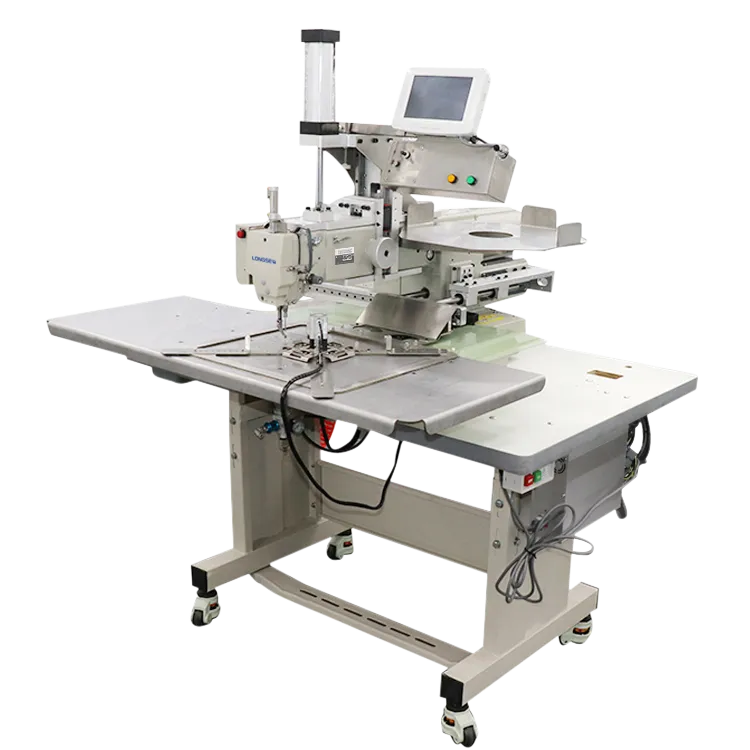Advanced Shirt-Making Automatic Sewing Machine for Efficient Production and Quality Control
The Evolution of Automatic Sewing Machines for Shirts
In today's fast-paced fashion industry, the demand for efficiency, precision, and quality has driven significant technological advancements. One of the pivotal innovations in apparel manufacturing is the automatic sewing machine for shirts. These machines have revolutionized not only how shirts are produced but also the broader landscape of garment manufacturing.
A Brief History
The sewing machine's inception dates back to the 19th century, marking the beginning of a new era in textile production. The introduction of automatic sewing machines was a game-changer, allowing manufacturers to increase output drastically while minimizing labor costs. As technology evolved, so did the sewing machines. The shift from manual to automatic machines meant that factories could produce higher volumes of garments with improved consistency.
Understanding Automatic Sewing Machines
Automatic sewing machines are equipped with advanced features that enable them to perform complex tasks with minimal human intervention. These machines can execute various stitching techniques, often integrated with computer controls that manage speed, tension, and stitch patterns. This level of automation ensures uniform quality across all produced items, which is crucial for brands seeking to maintain a consistent look and feel in their collections.
Features and Benefits
The primary advantage of automatic sewing machines for shirts lies in their efficiency. These machines can operate at high speeds, often completing operations in a fraction of the time it would take a skilled seamstress. For instance, a traditional sewing setup might require multiple workers to perform tasks like cutting, stitching, and finishing, whereas an automatic machine can often handle several of these operations concurrently.
Moreover, the precision of automatic machines reduces fabric waste significantly. These machines are programmed to make exact cuts and stitches, optimizing material use and thereby supporting sustainable practices in textile manufacturing. Additionally, the consistency offered by automation enhances quality control, resulting in fewer defective products reaching consumers.
automatic sewing machine for shirts

Impact on the Workforce
While automatic sewing machines have brought considerable efficiency to shirt production, they have also triggered discussions about the workforce in the garment industry. The fear of job losses due to automation is a prevalent concern. However, many experts argue that the shift towards automation does not simply eliminate jobs; instead, it transforms them. Workers may find themselves moving from repetitive manual tasks to roles that focus on machine operation, maintenance, and quality assurance.
As the industry evolves, there is a growing need for workers to upskill. Training programs tailored to teaching employees how to operate and troubleshoot advanced sewing machines can help ensure they remain valuable in the changing landscape.
The Future of Shirt Manufacturing
Looking ahead, the future of automatic sewing machines in shirt manufacturing appears promising. With ongoing advancements in artificial intelligence and robotics, we can expect even more sophisticated machines capable of handling intricate designs and patterns. Smart sewing machines that can learn from previous operations and adapt settings accordingly are already in development, promising to further enhance efficiency and reduce production times.
Moreover, as consumer demand shifts towards personalized and sustainable products, automatic sewing machines must adapt to meet these needs. The ability to quickly switch between different styles, sizes, and patterns without extensive reconfiguration will be essential for manufacturers aiming to stay relevant in a competitive market.
Conclusion
The development of automatic sewing machines for shirts marks a significant milestone in the evolution of garment manufacturing. These innovations not only enhance productivity and consistency but also drive sustainable practices by minimizing waste. While the shift toward automation raises questions about the future of jobs in the textile industry, it also opens new avenues for workforce development and skills enhancement.
As we move further into the future, the integration of technology in fashion manufacturing will undoubtedly continue to evolve. The automatic sewing machine is not just a tool for production; it symbolizes the marriage of tradition and innovation, setting the stage for a new era in shirt production and the broader apparel industry. By embracing these changes, manufacturers can not only improve their processes but also contribute positively to the overall fabric of the garment industry.
-
Industrial Cylinder Arm Sewing Machine: Revolutionizing Heavy-Duty SewingNewsJul.28,2025
-
Cylinder Arm Sewing Machine: Perfect for Special Sewing ApplicationsNewsJul.28,2025
-
Cylinder Bed Sewing Machine: Essential for Sewing Complex MaterialsNewsJul.28,2025
-
Heavy Duty Sewing Machine: The Essential Tool for Industrial ApplicationsNewsJul.28,2025
-
Computerized Pattern Sewing Machine: Revolutionizing Precision StitchingNewsJul.28,2025
-
Heavy Duty Industrial Sewing Machine: Power Meets PrecisionNewsJul.28,2025
-
Leather Sewing Machine: The Industrial Standard for Tough MaterialsNewsJul.18,2025





























